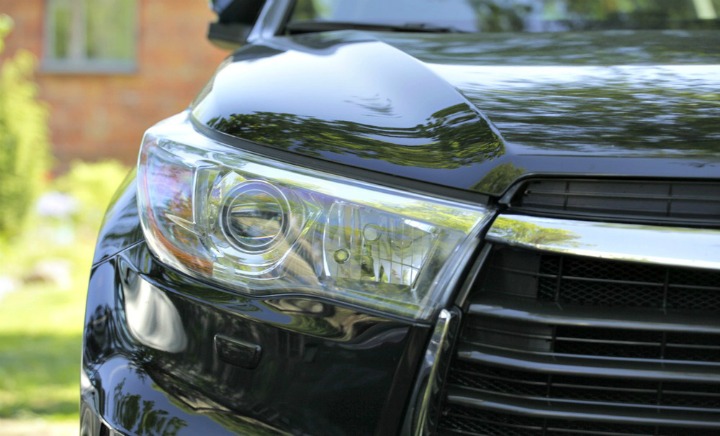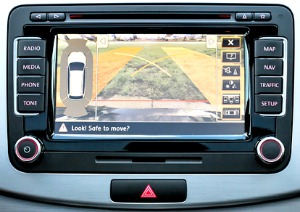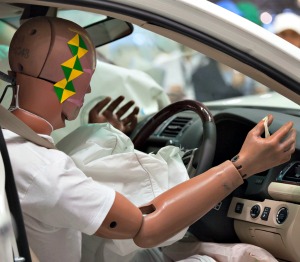How to Determine the Best Car for Your Teen Driver?

It used to be when a teen got his or her driver’s license, the family just handed over the keys to the oldest car in the driveway, or the least expensive car on the lot. But experts call that outdated thinking.
That’s because parents want to know that their teenage drivers are safe in their new vehicles. And in today’s automotive market, safety means a few things — modern features, limited horsepower and a bigger, bulkier frame.
“Whether buying new or used, parents always have safety at the top of mind when they are looking for a vehicle for their teen,” says Russ Rader, senior vice president of communications for the Insurance Institute for Highway Safety.
According to the IIHS, teens are the riskiest drivers on the road, and so they need the most advantages to avoid crashes and to protect them when collisions happen.
Maureen Vogel, spokesperson for the National Safety Council, says some of the things teens struggle with are the things that experienced drivers learn only after years of driving.
“Teen drivers are brand new and don’t always make the best turns or know when to merge. They don’t always drive the appropriate speed for the conditions. These are things that we learn, but they haven’t had the experience yet to learn those lessons,” she says.
While the misconception is that teens are cranking their stereo and texting their friends, the reality is that teenage driving is dangerous even in the least distracted environments.
RELATED: 10 Cheapest Cars to Insure for Teens
“People think that teens are more distracted, but in reality, it is inexperience that makes driving more dangerous for teens,” Vogel says.
And because there is no cure for inexperience other than practice, it is imperative for parents to give every advantage they can to their young drivers.
“Teen drivers need every level of extra protection we can give them,” Vogel says.
Safety features for teen drivers
While autonomous cars aren’t yet a commercial reality, modern vehicles have built in them a host of safety features designed to avoid crashes in the first place. Many of those features have just come on the market in the last few years and are not yet universally appreciated.
“We have found that parents often have outdated ideas about what makes a safe vehicle,” Rader says. “For example, a survey we did a few years ago found that most parents have no clue about electronic stability control — which is one of the most important safety features in a vehicle, and especially with teens. It helps with some of the common situations they get into like going too fast around curves or overcorrecting on the highway.”

The IIHS recommends that all vehicles teens drive should be equipped with electronic stability control. According to crash data, the feature cuts single-vehicle crash risk nearly in half.
Electronic Stability Control has been required on all new vehicles since the 2012 model year, but it was available as an optional add on before that, meaning that no matter what vehicle parents are looking at, ESC is a must-have option.
The great thing about integrated safety features like electronic stability control is that they can compensate for the mistakes humans make behind the wheel, which benefits teens the most, Vogel says.
“The technology that is in our vehicles today holds a lot of potential to eliminate car crashes moving forward,” Vogel says. “Most crashes are human error — they are because of something we do, not a blown tire or something. If you can put systems that compensate for those human failings, we have the potential to be a lot safer.”
Another incredibly helpful feature beyond electronic stability control is automatic emergency breaking — where you are approaching the vehicle in front of you, you don’t realize you need to brake, and it takes over.
Other ones Vogel recommends are automatic headlights and automatic high-beam assists, as well as lane departure warnings and blind spot protection.
“These are things that all drivers can benefit from, but especially teens. During their first 12 months of licensure, they are so vulnerable,” Vogel says.
What to avoid when choosing a car for your teen
According to the IIHS, teens may be tempted to test the limits of a powerful engine, and so parents would be wise to not opt for the high-horsepower models.
But that gets to another factor in teen driving — setting ground rules as a parent.
The National Safety Council has a parent-teen driving agreement, which is a contract for getting the keys and can be found at Driveithome.org.
The contract covers things like when the car can be used, rules regarding passengers, distractions, night driving, seat belts, speeding, and impaired and drowsy driving.
 One of those factors — peer passengers — is especially important, because when teen drivers have passengers in the car who are not adults, the odds of getting into a fatal crash increases by 44 percent, Vogel said.
One of those factors — peer passengers — is especially important, because when teen drivers have passengers in the car who are not adults, the odds of getting into a fatal crash increases by 44 percent, Vogel said.
“Teens don’t handle distractions around them very well. Passengers can add the peer pressure, as well. We definitely want to see teens riding with adults or by themselves for those first 12 months,” Vogel says.
Parents should also be aware of how they are driving at all times.
“Parents literally hold the key to safer drivers. If you want to have a safer teen driver, you should drive the way you want them to drive,” Vogel says.
“Don’t use your phone. Don’t eat or drink. Don’t drive when you are upset or too tired. Model the kind of behavior you want your teens to model.”
Vogel adds that from the time your child’s car seat is facing forward, they are watching what we do.
“Parental involvement can be the difference between life and death for a teen driver.”
Does the size of a car matter?
According to a study by the Highway Loss Data Institute, small cars and minicars are a double-whammy. Not only are teens more likely to crash them, HLDI says they also don’t offer much protection when a crash occurs because of their minimal weight and small crush zone.
“Bigger vehicles are just safer,” Rader says.
According to the HDLI, it’s not entirely clear why small cars and minicars have high crash rates, but their greater maneuverability may encourage young drivers to make sudden moves. In addition, cars with shorter wheelbases are less stable and therefore less forgiving when drivers make mistakes.
So, the IIHS recommendations say that bigger, heavier vehicles are safer. They protect better in a crash.
Crash test ratings and teen drivers
According to the IIHS, the principle parents should keep in mind is that they want to seek out a vehicle with the highest crash test ratings they can afford. To help with that effort, the IIHS has compiled a list of best choices for teens starting under $20,000. They also have a list of good choices for teens starting under $10,000. The entire list can be found here.
CHECK OUT: 4 Ways to Save When Insuring a Teen Driver
And while safety is obviously the first priority for parents, cost is an inevitable challenge. According to Charles Cyrill, director of media and public relations for the National Automotive Dealers Association, there are some options parents should consider that can balance cost against safety and reliability.
For example, he suggests shopping for recently off-lease vehicles and certified pre-owned vehicles.
Certified pre-owned is where the manufacturer puts the vehicle through a rigorous inspection process and then puts its stamp of approval on it. The vehicle is then covered by the original factory warranty and possibly an extended warranty.
Shopping for certified pre-owned or recently off-lease vehicles allows parents to buy models and features that would be out of reach if the vehicle was new.
Finally, IIHS recommends that before purchasing a used vehicle, it’s critical to check for outstanding recalls. You can enter the Vehicle Identification Number here for recall information. They recommend that you also notify the manufacturer once you purchase the vehicle, so the company can make sure you receive future recall notices.
“If you are buying a vehicle, and you can afford to get a new vehicle with the latest safety features, absolutely do that,” Rader says. “But if you are looking at a used vehicle, and budget is a significant constraint, parents should buy the most safety they can afford.”
